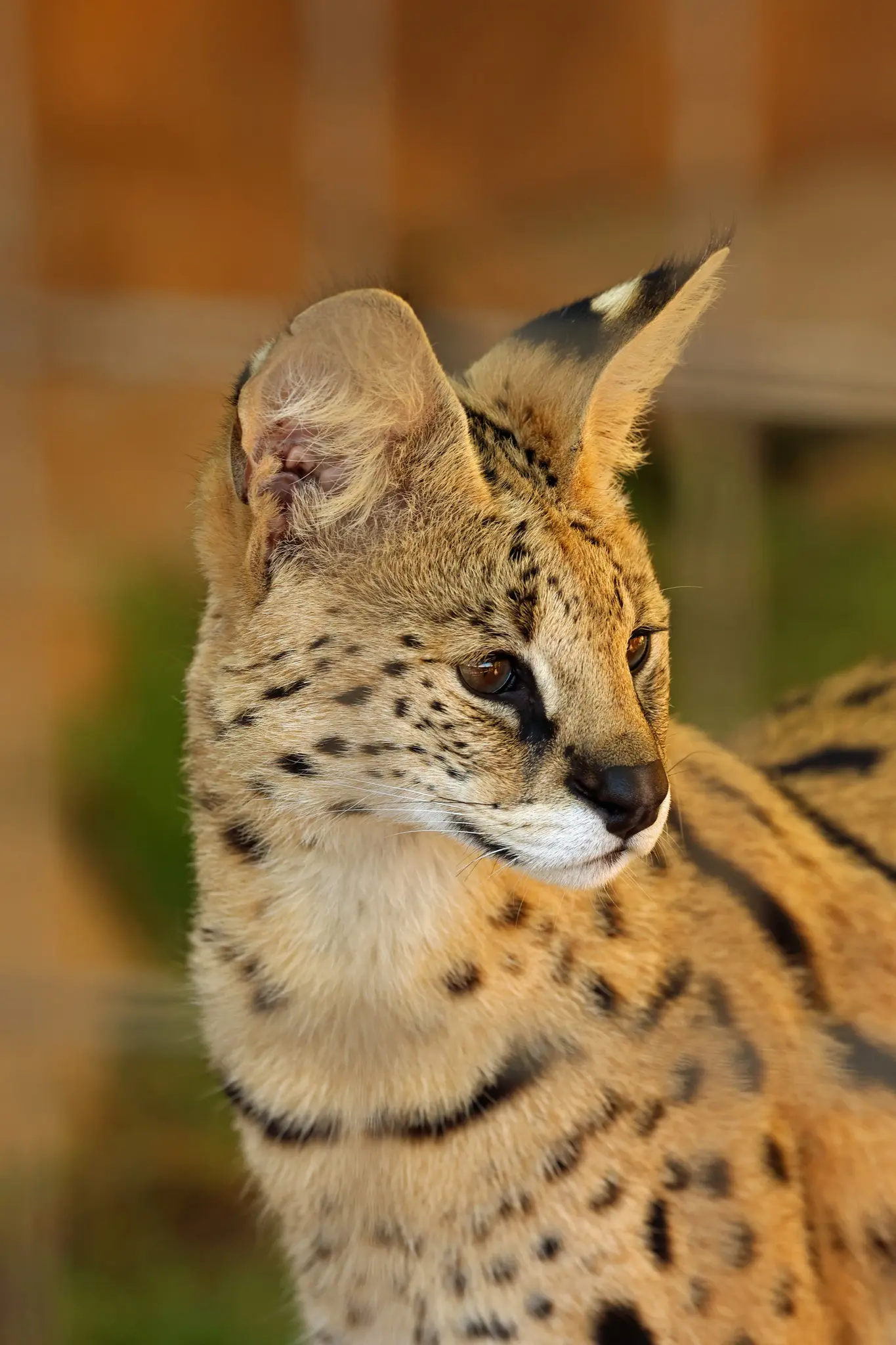Small Cats
Small cats, also known as lesser cats, belong to the Felidae family and include a diverse group of species found across the globe. These agile and elusive felines are smaller in size compared to their larger relatives like lions and tigers, but they are equally fascinating.



Caracal Lynx
Native to Africa, the Middle East, and parts of Asia, the Caracal Lynx is known for its distinctive tufted ears and sleek, tawny fur. These agile hunters are skilled at stalking and pouncing on prey, which primarily consists of small mammals and birds. Caracal Lynx are solitary and territorial animals, typically inhabiting dry savannas and scrublands.
- It is believed that caracals were significant in Ancient Egyptian religion. They have been found embalmed and wall paintings of them exist.
- In the past they were used for hunting and blood sports. One of these was to release a caracal in a flock of pigeons and bets were then placed on how many it could catch.
- The name caracal comes from the Turkish words for ‘black ear’-kara kulak. They are known as the rooikat in Afrikaans which means red cat.
Unfortunately, most of the Asian caracal populations are dropping rapidly, and new ways need to be found for humans to live with this stealthy cat. Please join our efforts to secure a future for this species by donating to our conservation fund.
SOME ENDANGERED
Serval
Native to the grasslands and savannas of Africa, Servals are known for their distinctive long legs, large ears, and spotted coat. These agile hunters have keen senses and are skilled at stalking and pouncing on small mammals, birds, and insects. Servals are solitary and territorial animals, typically inhabiting areas with tall grass and shrubs.
- Super sleek: African servals are small, slender cats with long legs, a lean body, a short tail, and a small head. Their extra-long neck and legs give them the nickname “giraffe cat.” Servals have a coat that is tawny with both black lines and spots, while their belly is a soft white.
- Serval’s ears serve as radars which easily recognize sound produced by moving animal (even when they are moving in the underground tunnels). Along with other senses, ears help them find the prey quickly.
- The serval has the longest legs and largest ears for its body size of any cat.
Some people think it would be fun to own a wild or exotic cat. This has led to a serval hybrid called the “savanna cat,” a captive-raised serval bred with a domestic cat. Wild animals, even those born in zoos, keep their wild instincts for hundreds, even thousands, of years, so these cats do NOT make good pets. Special permits are required for trained experts or zoos to own or house wild servals, and it is against the law in some states to own savanna cats.
Servals are important to their human neighbors because they catch rodents, which carry diseases and contaminate food supplies. With fewer than 300 servals in zoos around the world and less than 150 in US zoos, getting to know this beautiful feline is a special treat for any animal lover!
Please join our efforts to secure a future for this species by donating to our conservation fund.
Photos by Karen Caster



